Table of Contents
Going a Bit Further
Flowers have long held a special place in human culture, not just for their vibrant colors and fragrant scents but for the messages they convey. Known as the “language of flowers” or floriography, this intricate symbolism assigns meanings and sentiments to different blooms. In this article, we dive into the captivating world of floral arrangements, exploring the rich tapestry of emotions and expressions that flowers can convey.
Flowers, with their enchanting beauty and captivating fragrances, have woven themselves into the very fabric of human culture for centuries. Beyond their aesthetic allure, they possess a remarkable ability to convey emotions and sentiments, a silent language that transcends words. This enchanting realm, often referred to as the “language of flowers” or floriography, invites us to explore the intricate symbolism and emotional tapestry that flowers have embroidered throughout history.
At the heart of floriography lies a profound connection between humans and the natural world. It is a language where each bloom, each hue and each arrangement whispers a story, expresses a feeling or conveys a message. A single red rose, for instance, has long been synonymous with love and passion, while a delicate lily can signify purity and renewal. Understanding these floral meanings adds depth and nuance to the act of gifting flowers, allowing individuals to communicate sentiments that may be difficult to put into words.
Floriography is a testament to the universal human desire to convey emotions and connect with one another. Whether in moments of joy, sorrow, celebration or remembrance, flowers have played a role in our most significant life events. They have been witnesses to weddings, expressions of sympathy in times of loss and tokens of appreciation during moments of gratitude. The choice of flowers and their arrangement can profoundly influence the emotional impact of these gestures.
Moreover, floriography has been an integral part of various cultural traditions and ceremonies around the world. In Japan, the art of Ikebana or Japanese flower arranging, is a meditative practice that reflects harmony, balance and the changing seasons. In India, the use of marigolds in garlands carries spiritual significance and is an integral part of religious rituals. These traditions illustrate how flowers are not only vessels of meaning but also bridges between humans and their cultural heritage.
The language of flowers also extends its reach into the world of literature and art. Poets and writers have long drawn inspiration from the symbolism of blooms, weaving floral motifs into their works to evoke emotions and convey messages. Artists have captured the ephemeral beauty of flowers on canvas, immortalizing their delicate forms and intricate details. This fusion of art and floriography enriches our cultural heritage and provides a source of endless fascination.
In conclusion, the language of flowers, floriography, is a testament to the profound connection between humans and the natural world. It serves as a reminder that beauty is not merely a visual experience but an emotional one, that flowers can convey sentiments that words may fail to express. Through this enchanting language, we delve into the rich tapestry of emotions and expressions that flowers have woven into the human experience, reminding us of the enduring power of nature to connect, console and celebrate the full spectrum of human emotions.
For additional details, consider exploring the related content available here Floriography: The Language of Flowers & Their Meanings | Interflora
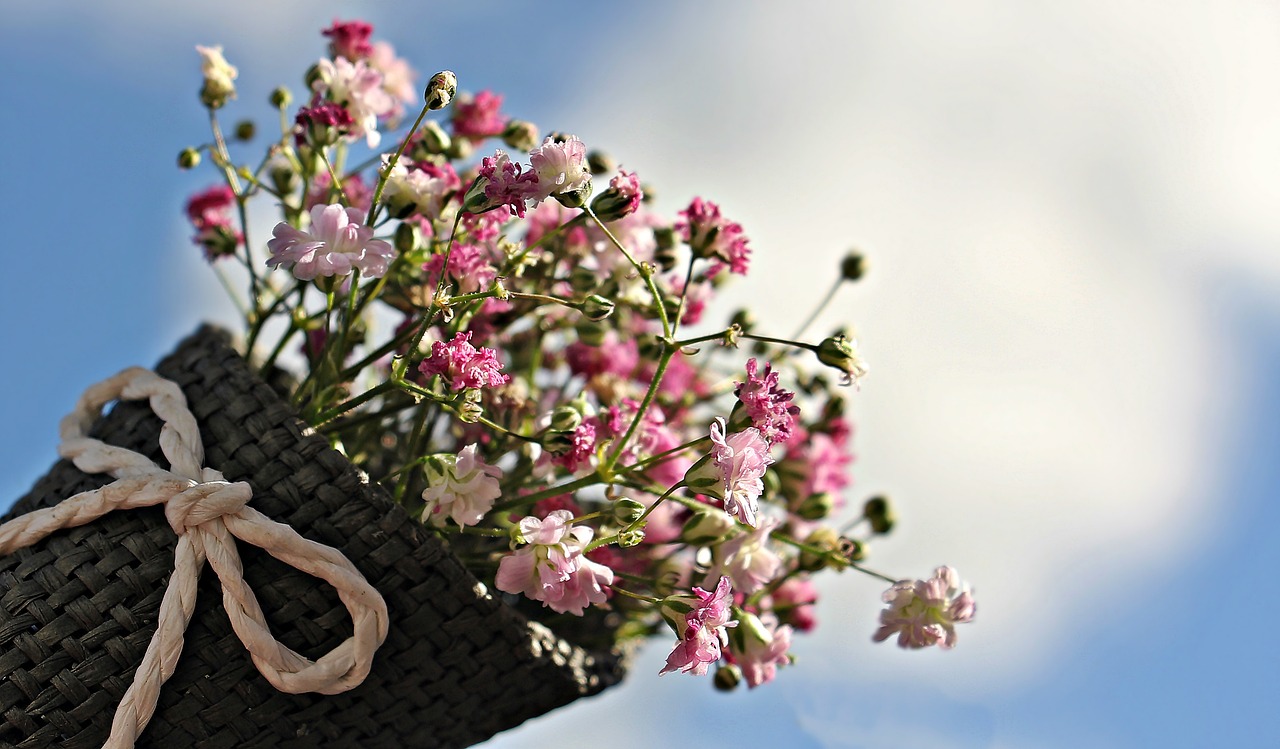
Key Points
The Historical Roots of FloriographyThe language of flowers has ancient origins, with evidence of its use dating back to ancient civilizations like the Greeks and Romans. However, it gained prominence during the Victorian era when floral symbolism became a popular means of non-verbal communication.
The Historical Roots of Floriography: A Tale of Ancient Wisdom and Victorian Romance
The enchanting practice of expressing sentiments through flowers, known as floriography, is steeped in history and culture, tracing its roots back through millennia:
Ancient Beginnings: Floriography’s origins can be found in the ancient world. The Greeks and Romans were among the earliest to assign meanings to flowers, associating them with gods, myths and rituals. Flowers were not just botanical entities; they were imbued with symbolism, often linked to emotions, virtues and the divine.
Eastern Influences: While the Western world was developing its own language of flowers, Eastern cultures, particularly in Asia, also had their traditions of floral symbolism. In Japan, for instance, the art of hanakotoba (flower language) was practiced, where specific flowers were used to convey complex messages and emotions.
Victorian Flourish: Floriography reached its zenith during the Victorian era, a time of strict societal etiquette and restrained expressions of emotion. In this era of complex courtships, flowers became a refined means of conveying feelings that could not always be openly expressed. Bouquets became intricate arrangements, each bloom carefully chosen to send a specific message.
The Flower Dictionary: To facilitate the exchange of coded messages, various flower dictionaries and guides were published during the 19th century. These guides provided detailed lists of flowers and their associated meanings, allowing people to craft intricate messages with their floral gifts. Gifting a bouquet thus became an art form, akin to composing poetry.
Emotional Complexity: Floriography enabled individuals to convey a wide range of emotions, from love and friendship to more nuanced sentiments like jealousy or regret. Different flowers, colors and arrangements allowed for subtlety and depth in the language of flowers, making it a fascinating means of expression.
Cultural Variations: It’s important to note that the language of flowers varies across cultures and regions. What a particular flower symbolizes in one culture may hold a different meaning elsewhere. This diversity adds richness to the practice and reflects the unique cultural contexts in which it has thrived.
Contemporary Resurgence: While the strict adherence to flower symbolism waned in the 20th century, the charm of floriography has never entirely disappeared. Today, there’s a resurgence of interest in the language of flowers, with people seeking to revive this enchanting tradition in personal and meaningful ways.
In tracing the historical roots of floriography, we uncover a tapestry of human expression, from the mystical reverence of ancient civilizations to the refined courtship rituals of the Victorian era. This enduring practice continues to remind us of the profound language that nature itself speaks, offering us a timeless means of communication that transcends words.
You can also read more about this here: Flowers and Their Meanings: The Language of Flowers …
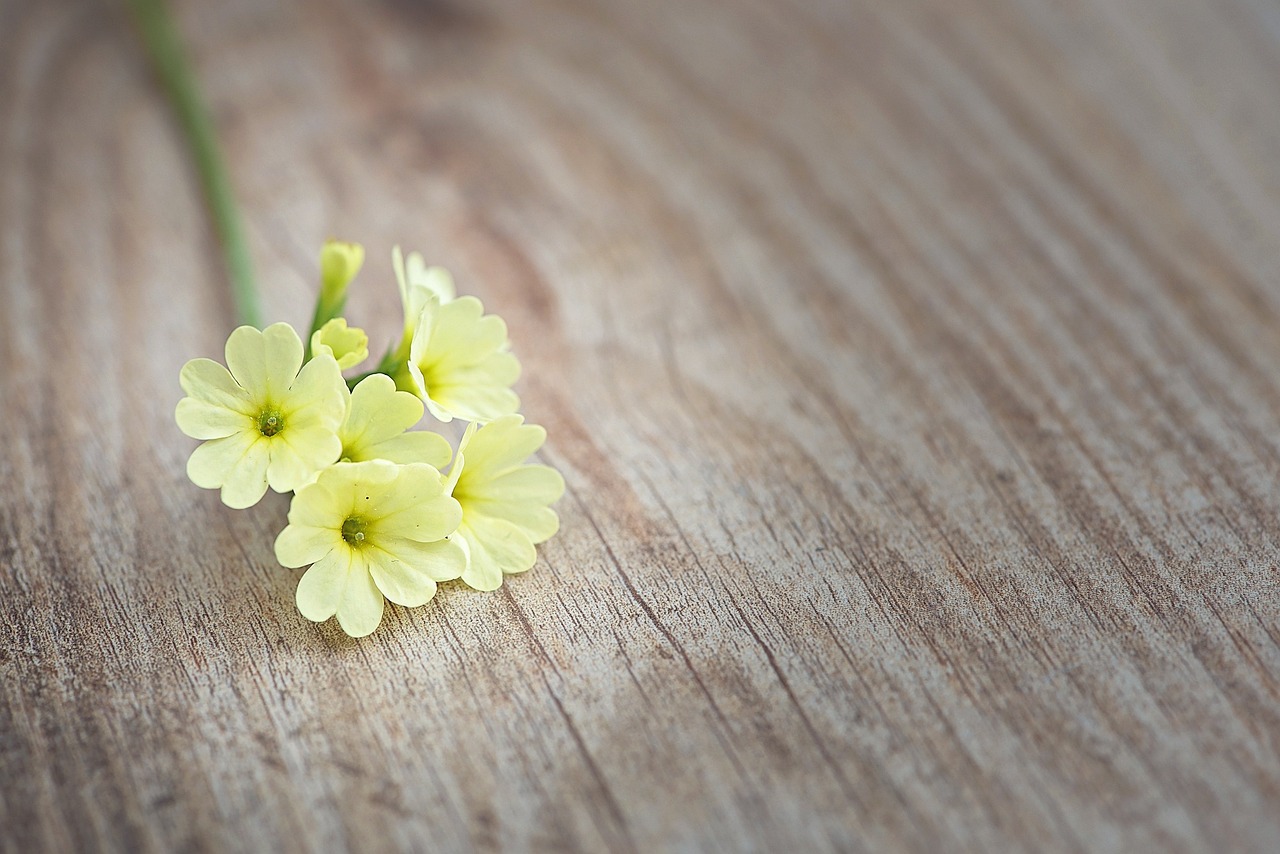
The Beauty of Blooms
Expressing Emotions Through FlowersEvery flower carries its own unique symbolism. For instance, red roses symbolize love and passion, while white lilies represent purity and innocence. Understanding these meanings allows us to craft floral arrangements that convey specific emotions and sentiments.
The language of flowers, known as floriography, provides a captivating and nuanced way to convey emotions and sentiments without the need for words. It’s a timeless art form that transcends cultures and eras, allowing us to express feelings and emotions in a beautifully subtle and symbolic manner.
The use of flowers as messengers of emotion can be traced back through history, with each bloom carrying its own unique symbolism. Red roses, for instance, have long been associated with love and passion. The deep crimson petals speak of desire and romance, making them an iconic choice for declarations of affection. A bouquet of red roses can ignite the flames of love and convey a heartfelt message of devotion.
On the other hand, white lilies evoke purity and innocence. Their pristine petals and graceful form symbolize a sense of untainted beauty and the beginning of new chapters in life. White lilies are often chosen for weddings and other significant life events to represent the purity and freshness of new beginnings.
Delving further into the floral lexicon, daisies embody a sense of innocence and simplicity, making them a perfect choice for conveying feelings of happiness and cheerfulness. Sunflowers, with their radiant yellow faces, are a symbol of optimism and joy, offering a burst of sunshine and positivity.
Beyond individual flowers, the arrangement itself can also convey specific emotions. A tightly packed bouquet can signify a deep and strong bond, while a loose and wild arrangement may express freedom and spontaneity. The choice of colors, too, plays a crucial role in the emotional message of a floral arrangement. Warm colors like reds and oranges exude passion and energy, while cool blues and purples evoke calm and serenity.
Understanding the language of flowers allows us to craft floral arrangements with precision and intention. Whether celebrating a joyful occasion, expressing condolences or simply brightening someone’s day, the art of floriography enables us to convey our feelings in a deeply meaningful and heartfelt way. It’s a reminder that nature’s beauty is not only aesthetic but also a profound vehicle for human expression and connection.
Explore this link for a more extensive examination of the topic: Flower Meanings: Learn The Language of Flowers | Balsam Hill
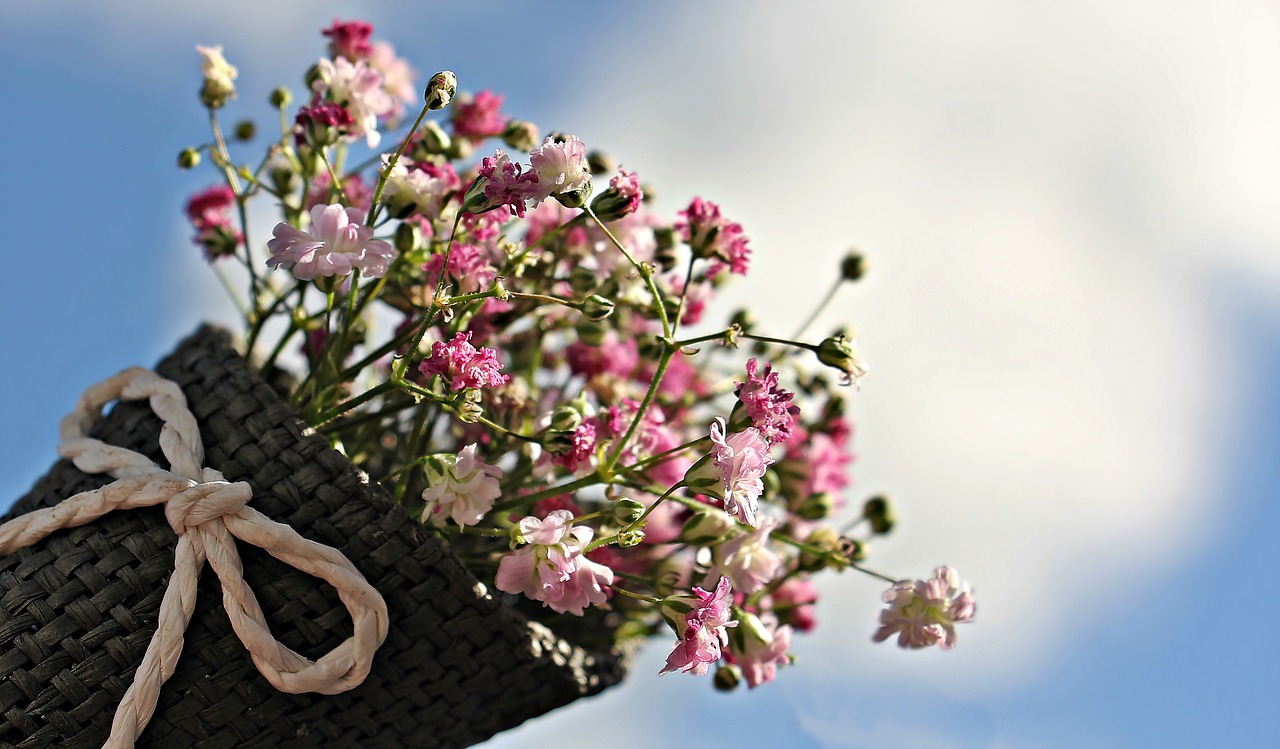
A Bouquet of Emotions
Flower SymbolismDive into the symbolic meanings of popular flowers, including roses, tulips, daisies and orchids. Discover how these blooms can be combined to send nuanced messages of love, friendship, sympathy and more.
Flowers have long been messengers of emotions and sentiments, each bloom carrying its own unique symbolism and cultural significance. Delving into the world of flower symbolism allows us to unlock the secret language of nature, where a carefully crafted bouquet can convey a world of feelings and intentions.
Roses, often considered the quintessential flower of love, come in various colors, each carrying its own message. Red roses symbolize passionate love and desire, while pink roses convey admiration and gratitude. White roses represent purity and innocence, making them a popular choice for weddings. Yellow roses symbolize friendship and joy, while orange roses signify enthusiasm and fascination. The combination of these different rose colors within a bouquet can create a nuanced expression of love, from deep devotion to heartfelt friendship.
Tulips, with their graceful petals and vibrant hues, offer a diverse range of meanings. Red tulips are associated with deep love and passion, while yellow tulips convey cheerful thoughts and sunshine. White tulips symbolize purity and forgiveness and purple tulips represent royalty and admiration. Mixing and matching tulip colors can help you craft a bouquet that expresses your specific sentiments, whether it’s a declaration of love or a gesture of appreciation.
Daisies, with their simple and timeless charm, carry messages of innocence, loyalty and purity. They are often seen as symbols of new beginnings and can be a wonderful choice for celebrations and milestones. Mixing daisies with other flowers can enhance the message, adding depth and layers of meaning to your floral gift.
Orchids, with their exotic beauty and elegance, symbolize love, luxury and strength. These blooms are often associated with rare and refined beauty, making them a symbol of sophistication and admiration. Combining orchids with other flowers can create a bouquet that conveys not only affection but also a sense of awe and admiration.
The art of combining these flowers in a bouquet allows for endless creativity and the ability to send nuanced messages. For example, combining red roses and white tulips can symbolize a deep and pure love, while a mix of yellow roses and daisies can express joyous friendship. Orchids and pink roses together can convey both love and admiration, making it a fitting choice for a romantic gesture.
In conclusion, flower symbolism adds depth and emotion to the act of gifting flowers. It allows us to craft bouquets that are not just beautiful but also rich in meaning, capable of conveying a wide spectrum of emotions, from love and friendship to sympathy and appreciation. By understanding the language of flowers, we can create floral arrangements that resonate with the hearts of those we care about, making every bouquet a truly special and thoughtful gift.
You can also read more about this here: The Symbolism and Meaning Behind Wedding Flowers
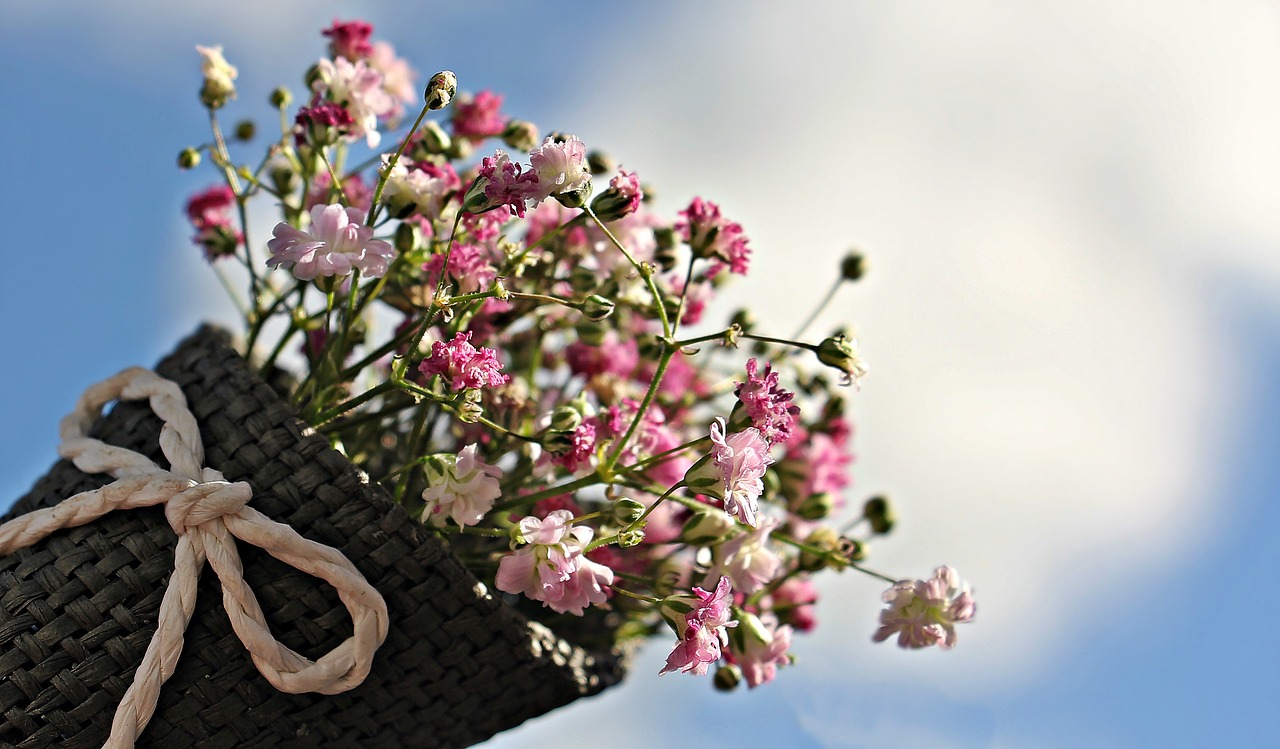
Offering Additional Insight
Floral Arrangements for Special OccasionsExplore how flowers play a significant role in various life events and celebrations. From weddings and anniversaries to funerals and graduations, specific blooms are chosen to convey well-wishes, love, condolences and congratulations.
The language of flowers is a timeless and universal way to convey our deepest emotions and sentiments during life’s most poignant moments. Floral arrangements have an enduring role in enhancing the beauty and symbolism of special occasions, each bloom carefully chosen to encapsulate the essence of the event.
In the realm of weddings, flowers take center stage, adorning not only the bride but also the entire celebration. The bridal bouquet, with its carefully selected flowers, reflects the bride’s personality and style. Roses may signify love and passion, while lilies evoke purity and elegance. The floral theme extends to the venue, where exquisite arrangements grace the ceremony and reception spaces. Every petal and leaf contributes to the ambiance, setting the tone for a day of love and commitment.
Anniversaries are another occasion where flowers come into play, symbolizing enduring love and devotion. Whether it’s a first-year celebration marked with delicate paper-thin petals or a golden anniversary adorned with radiant blooms, flowers have a unique ability to convey the passage of time and the growth of love over the years. Each anniversary is an opportunity to choose flowers that speak to the couple’s journey together.
In moments of loss, flowers offer solace and a means of expressing sympathy. Funeral and memorial arrangements provide comfort to grieving families, their gentle beauty offering a source of solace and remembrance. White lilies, symbolizing purity and renewal, are often chosen to convey condolences, while red roses may represent enduring love and respect for the departed.
Graduations, on the other hand, are celebrations of accomplishment and new beginnings. Here, flowers represent the joy of achievement and the promise of a bright future. Graduates often receive bouquets and leis, each bloom carrying the well-wishes and pride of family and friends. The vibrant colors and fragrant blossoms mirror the optimism and excitement of the graduate’s journey ahead.
Flowers also play a role in cultural and religious celebrations, each tradition imbuing specific blooms with unique significance. From the cherry blossoms of Japanese hanami festivals to the marigolds of Dia de los Muertos, flowers hold deep cultural and spiritual meaning, enriching these events with tradition and symbolism.
In essence, floral arrangements are not mere decorations; they are silent messengers of our deepest emotions and intentions. With their varied colors, scents and symbolism, they enhance the significance of life’s milestones and offer a tangible expression of our love, support and congratulations during the special occasions that shape our lives.
For a comprehensive look at this subject, we invite you to read more on this dedicated page: The Daisy Flower: Meanings, Images & Insights | Floraly
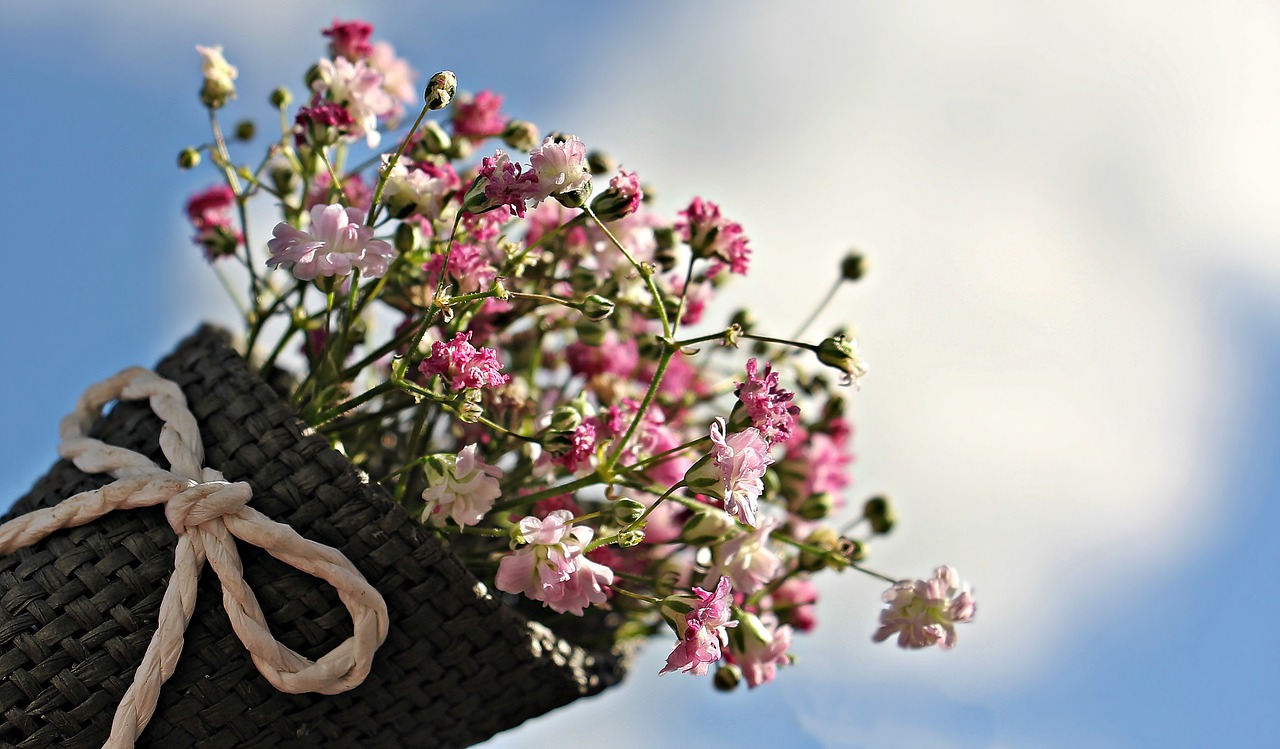
Cultural Variations
Regional Flower SymbolismThe language of flowers is not universal; it varies across cultures and regions. Learn about the different interpretations of flowers in various parts of the world and how cultural contexts influence floral choices.
Regional Flower Symbolism
The language of flowers is not universal; it varies across cultures and regions. Learn about the different interpretations of flowers in various parts of the world and how cultural contexts influence floral choices.
Asia: In many Asian cultures, flowers hold significant symbolic meanings. Cherry blossoms, for example, are revered in Japan as a symbol of the transient beauty of life. In China, the peony represents prosperity and good fortune, while the lotus symbolizes purity and enlightenment in Buddhism. The cultural significance of flowers in Asia often extends to traditional art forms, such as Ikebana (Japanese flower arranging) and Chinese brush painting, where the choice and arrangement of flowers convey deeper meanings.
Europe: European floral symbolism is rich and varied. Red roses are universally known as a symbol of love and passion, while white lilies often represent purity and virtue. In many European countries, the red poppy is associated with remembrance and honoring fallen soldiers, especially around World War I. In Eastern Europe, sunflowers are a symbol of adoration and loyalty. Floral motifs have also played a prominent role in European art, from the intricate floral designs of the Renaissance to the romanticism of the Pre-Raphaelite Brotherhood.
Middle East: Flowers have long held cultural significance in the Middle East. The rose, in particular, is highly regarded, often representing love and beauty. In Persian culture, the rose has been a symbol of love and mysticism for centuries. Jasmine, with its sweet fragrance, symbolizes purity and elegance in many Middle Eastern traditions. The rich floral patterns in Islamic art and architecture are a testament to the importance of flowers in the region’s cultural and aesthetic heritage.
Africa: Africa’s diverse cultures have their own unique interpretations of floral symbolism. For example, in Egypt, the blue lotus represents rebirth and transformation, drawing a connection to the Nile and its life-giving properties. In South Africa, the protea flower is a symbol of change and hope. The use of floral motifs in African textiles and pottery reflects the vibrant tapestry of cultures and traditions found across the continent.
The Americas: Native American cultures have a deep connection to the natural world, including flowers. The Cherokee, for instance, consider the wild rose a symbol of love and happiness. In Latin America, marigolds are associated with Dia de los Muertos (Day of the Dead) and are believed to guide spirits back to the living. In the United States, the state flower of each state carries its own unique symbolism, such as the California poppy symbolizing the spirit of the Golden State.
Oceania: Indigenous cultures in the Pacific islands often incorporate local flora into their traditions and art. In Hawaii, the hibiscus is the state flower and represents beauty and hospitality. The Maori people of New Zealand use the silver fern or “ponga,” as a symbol of strength, new beginnings and protection.
Exploring these regional variations in flower symbolism reveals the fascinating intersection of nature, culture and human expression. It underscores the profound ways in which flowers have shaped the identities and traditions of diverse cultures around the world. Understanding these floral languages provides a deeper appreciation for the beauty and significance of flowers in the global tapestry of human civilization.
Should you desire more in-depth information, it’s available for your perusal on this page: Flower Meanings: Symbolism of Flowers, Herbs, and More Plants …
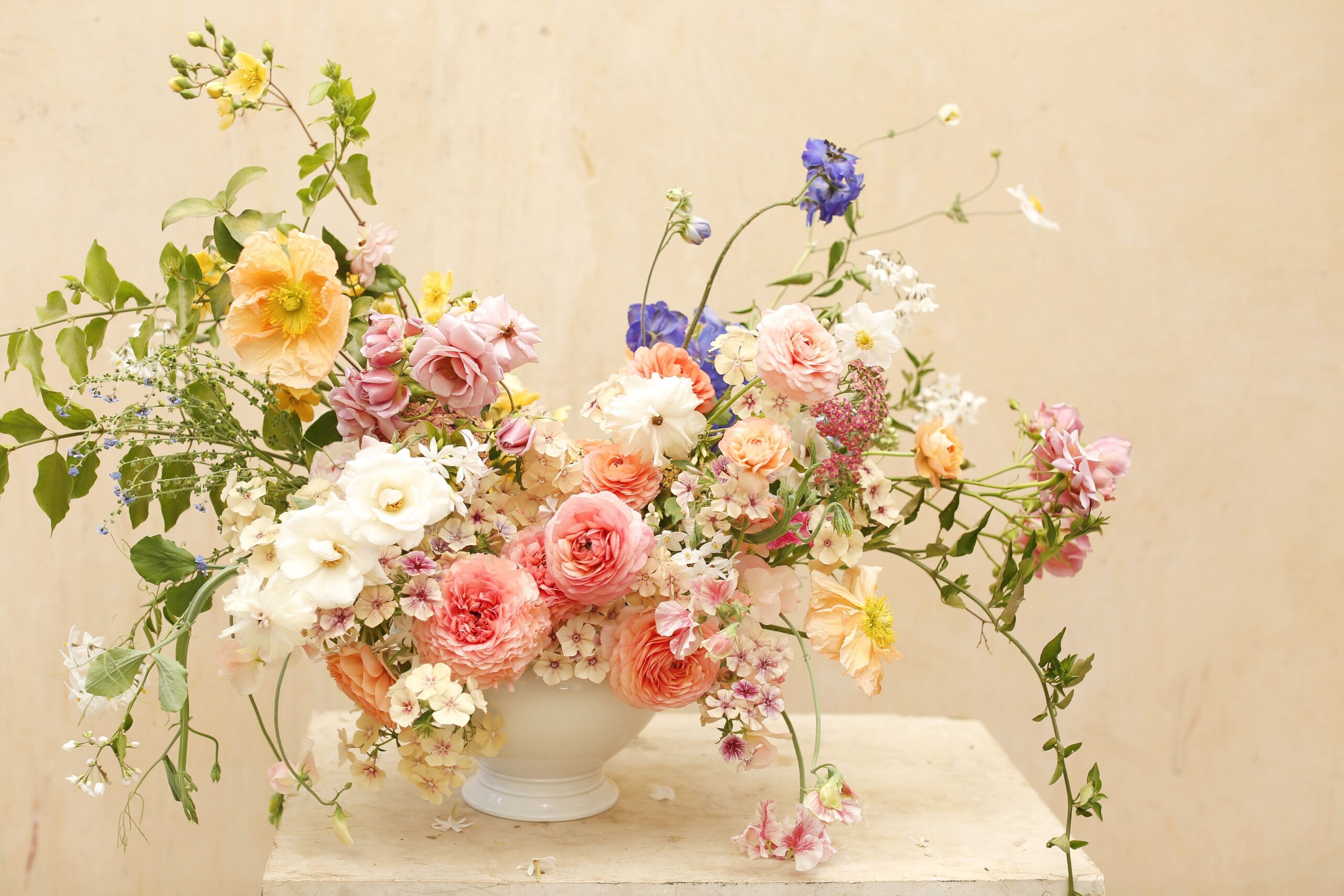
Clarification
Personalized Floral ExpressionsWith the knowledge of flower symbolism, individuals can create personalized floral arrangements that carry profound meaning. Discover how to select the perfect flowers to express your feelings on birthdays, holidays or just to brighten someone’s day.
The Language of Flowers: Crafting Personalized Floral Expressions
Flowers have long been known as messengers of emotions, carrying sentiments and messages through their colors, shapes and fragrances. Delving into the world of flower symbolism allows individuals to infuse their floral arrangements with profound personal meaning. Whether it’s to celebrate a birthday, mark a holiday or simply brighten someone’s day, understanding the language of flowers empowers us to create truly personalized and heartfelt floral expressions.
Unveiling the Floral Dictionary: Flower symbolism is a rich tapestry of meanings that transcends cultural boundaries. Each flower possesses its own unique significance and when combined in a bouquet or arrangement, they form a symphony of sentiments. For instance, the passionate red rose represents love, while the delicate lily signifies purity and renewal. Daffodils herald new beginnings and lavender invokes tranquility and peace.
Birthdays Blooming with Meaning: On birthdays, floral arrangements become more than just a gesture; they become a celebration of the individual’s essence. Personalized bouquets can be crafted by selecting flowers that align with the recipient’s birth month. For instance, those born in January might appreciate a bouquet featuring carnations, symbolizing admiration and fascination, while June’s recipients would cherish the timeless elegance of roses, representing love and gratitude.
Holidays Illuminated: Holidays become even more special when celebrated with floral expressions that carry the essence of the occasion. During Valentine’s Day, red roses convey deep love, while Easter bouquets featuring daisies and tulips symbolize purity, rebirth and hope. On Mother’s Day, customized arrangements can express gratitude and appreciation, with selections like irises signifying wisdom and admiration.
A Touch of Thoughtfulness: Sometimes, the most heartwarming gestures are those that come “just because.” Sending a personalized floral arrangement to someone on an ordinary day can uplift spirits and strengthen connections. Combining blossoms like sunflowers, radiating joy and loyalty, with forget-me-nots, a symbol of true love, can create a message of lasting affection and friendship.
Crafting Meaningful Messages: Beyond the choice of flowers, the arrangement’s design and color palette also convey sentiments. A cascading bouquet might represent a waterfall of emotions, while a tightly bundled posy can signify unity and togetherness. Color combinations can deepen the message; for example, red and white roses together can express unity, while a mixture of pastel hues can evoke feelings of calm and serenity.
The Beauty of Personalized Floral Language: Personalized floral expressions are a testament to the beauty of thoughtfulness. By taking the time to select flowers that resonate with the recipient’s personality and the occasion, we create a profound connection that goes beyond words. These arrangements become not only gifts but also cherished symbols of emotions shared and understood.
So, the next time you consider gifting flowers, delve into the language of flowers and let it guide you in creating a personalized floral masterpiece. Whether it’s for a birthday, holiday or a simple gesture of kindness, these blooms will carry a message that lingers in the heart, a reminder of the thought and care invested in the gift of nature’s artistry.
To delve further into this matter, we encourage you to check out the additional resources provided here: Flowers and Their Meanings: The Language of Flowers …

Modern Floriography
A Resurgence in Flower CommunicationWhile the Victorian era popularized the language of flowers, it is experiencing a resurgence in modern times. With the advent of social media and online flower delivery services, people are rediscovering the art of sending messages through carefully curated bouquets.
The Revival of Floral Communication in the Digital Age
The Victorian era’s fascination with the language of flowers, known as “floriography,” was a subtle and expressive way of conveying sentiments and emotions. In the modern age, we are witnessing a delightful resurgence of this charming tradition and it’s evolving in fascinating ways thanks to the digital era and the convenience of online flower delivery services. Here, we explore the revival of floral communication and how it has found a new home in the realm of social media and online interactions.
1. A Digital Renaissance:
In today’s digital landscape, where communication often relies on emojis and short texts, the art of floral communication is experiencing a renaissance. People are rediscovering the beauty of expressing sentiments through carefully selected blooms. Online platforms and flower delivery services have made it easier than ever to send floral messages to loved ones, whether near or far.
2. The Personal Touch:
Floral communication adds a deeply personal touch to messages. Each flower carries its own meaning and symbolism, allowing senders to craft messages that resonate with the recipient on a profound level. Whether it’s conveying love, gratitude, sympathy or friendship, flowers provide a unique and heartfelt way to express emotions.
3. Bouquets with Stories:
The resurgence of floral communication has given rise to bouquets with stories. People are no longer simply sending random flowers; they are curating meaningful arrangements that tell a narrative. These bouquets may include a combination of flowers that collectively convey a message, making the gesture even more poignant and memorable.
4. Social Media Expressions:
Social media platforms have become modern-day gardens of floral expression. Individuals are sharing photos of the exquisite bouquets they receive, along with heartfelt messages explaining the meaning behind each bloom. This not only adds a layer of depth to digital interactions but also introduces the language of flowers to a broader audience.
5. The Language of GIFs and Emojis:
In a world filled with digital communication, the language of flowers can be likened to the real-world equivalent of emojis and GIFs. Just as an emoji can convey laughter, tears or affection, a carefully chosen bouquet can speak volumes about the sender’s feelings. It’s a delightful fusion of the traditional and the contemporary.
6. Cross-Cultural Appeal:
Floral communication transcends cultural boundaries, making it universally appealing. The symbolism of flowers is often recognized and appreciated by people from diverse backgrounds, adding a layer of inclusivity to this timeless tradition.
7. Eco-Friendly Practices:
Many modern florists and flower delivery services are embracing eco-friendly practices, aligning with contemporary values of sustainability and environmental consciousness. This commitment to responsible sourcing and eco-conscious packaging resonates with a generation that values both tradition and sustainability.
In conclusion, the resurgence of floral communication in the digital age is a delightful fusion of tradition and technology. It allows people to convey heartfelt messages in a deeply personal and meaningful way, while also embracing the convenience of modern communication channels. As bouquets continue to tell stories and spread joy through social media and online interactions, the language of flowers is evolving to capture the essence of our digital era, making it a cherished and enduring form of expression.
For a comprehensive look at this subject, we invite you to read more on this dedicated page: Floriography: Learn about the hidden meaning of flowers

Exploration
Floral arrangements are more than just beautiful decor; they are a means of expressing complex emotions and sentiments. The language of flowers, with its rich symbolism and history, allows us to convey love, sympathy, joy and a myriad of other feelings through carefully chosen blooms. As we continue to celebrate life’s moments and connect with loved ones, the language of flowers remains a timeless and meaningful way to communicate our deepest emotions without uttering a single word.
Floral arrangements are indeed exquisite expressions of emotion, transcending their role as mere decor. The profound language of flowers, steeped in symbolism and centuries of tradition, offers us a unique channel to convey sentiments that words alone often struggle to capture. Here’s an extended exploration of the significance of this art:
A Profound Heritage: The language of flowers, also known as floriography, has a heritage dating back to the Victorian era. During a time when social norms inhibited open expression of feelings, flowers became a sophisticated means of communication. Each bloom carried its own symbolism, allowing people to express affection, gratitude or sorrow discreetly.
A Palette of Emotions: Floral arrangements allow us to paint a rich and diverse spectrum of emotions. A single bouquet can express love and admiration with roses, offer comfort and sympathy with lilies or convey friendship and gratitude with sunflowers. The art lies in selecting the right flowers and colors to precisely convey the intended message.
Universal Language: Flowers are a universal language of emotion. Regardless of cultural or linguistic differences, the beauty and symbolism of flowers transcend boundaries, making them a universally understood means of expression. In this globalized world, the language of flowers serves as a unifying force.
An Art of Nuance: The subtle nuances within floriography offer depth to our emotional expression. For example, the choice between red and pink roses can convey the intensity of love, while the addition of baby’s breath can signify purity and innocence. These nuances enable us to tailor our messages with precision.
Connecting Across Distances: In today’s fast-paced world, where loved ones may be separated by great distances, sending flowers remains a cherished way to bridge the gap. The surprise arrival of a thoughtfully arranged bouquet can instantly connect hearts and make loved ones feel cherished.
Life’s Celebrations and Challenges: Whether it’s a joyful celebration or a moment of grief, floral arrangements are a constant presence. They grace weddings, anniversaries, birthdays and also offer solace and support during times of loss. Flowers serve as silent companions through life’s ups and downs.
A Source of Inspiration: Beyond their communicative power, flowers have long been a source of inspiration for artists, poets and writers. Their beauty and symbolism have been woven into countless works of art, literature and music, further cementing their significance in human culture.
Sustainability and Ethical Choices: As we move towards more sustainable practices, the floral industry is also evolving. Ethical choices, such as locally sourced and seasonal blooms, are gaining prominence, allowing us to express our emotions while respecting the environment.
In essence, floral arrangements are not just decorative elements; they are conduits of our deepest feelings, repositories of tradition and universal symbols of emotion. In a world where words can sometimes fall short, the language of flowers continues to be a timeless and meaningful way to convey our most intricate emotions, fostering connection and understanding among people from all walks of life.
You can also read more about this here: Explore the Language of Flowers at the DAM | Denver Art Museum
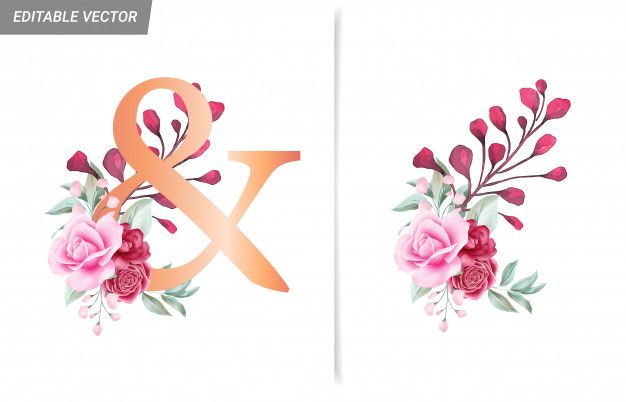
More links
Additionally, you can find further information on this topic by visiting this page: Floriography: Language and Meaning of Flowers | Bloom & Wild
